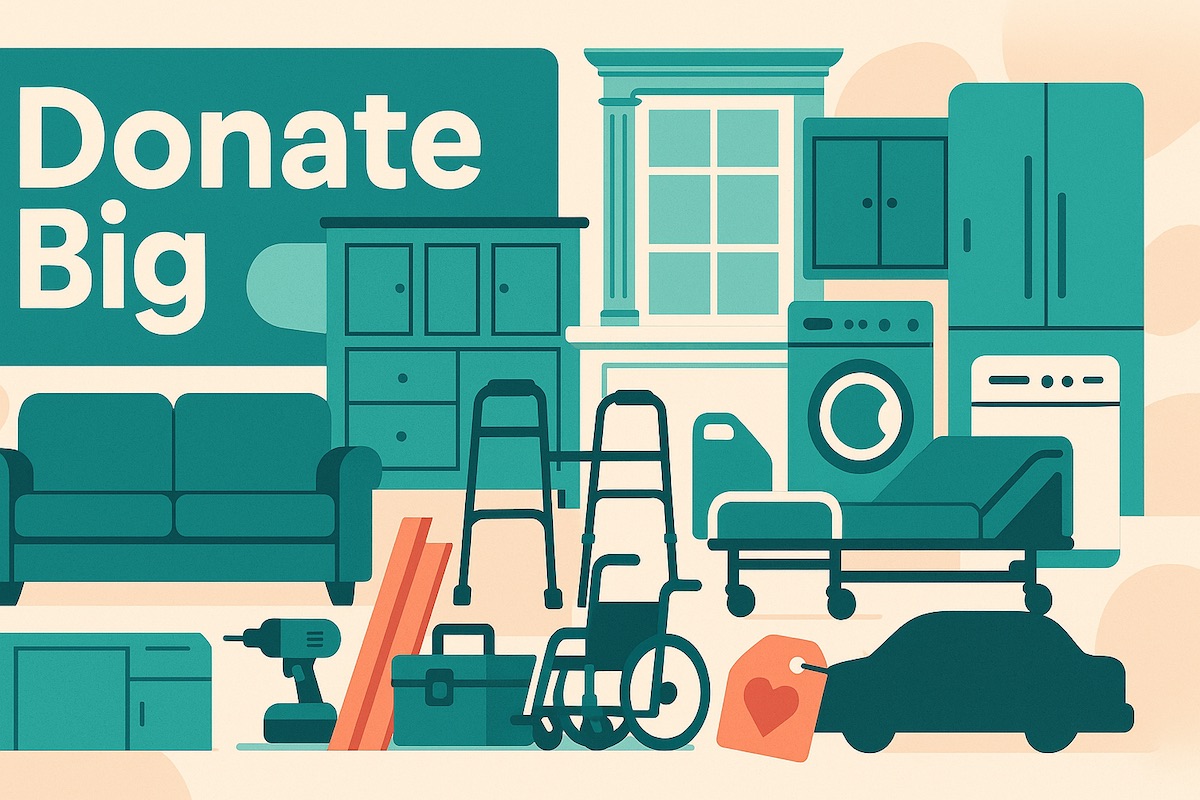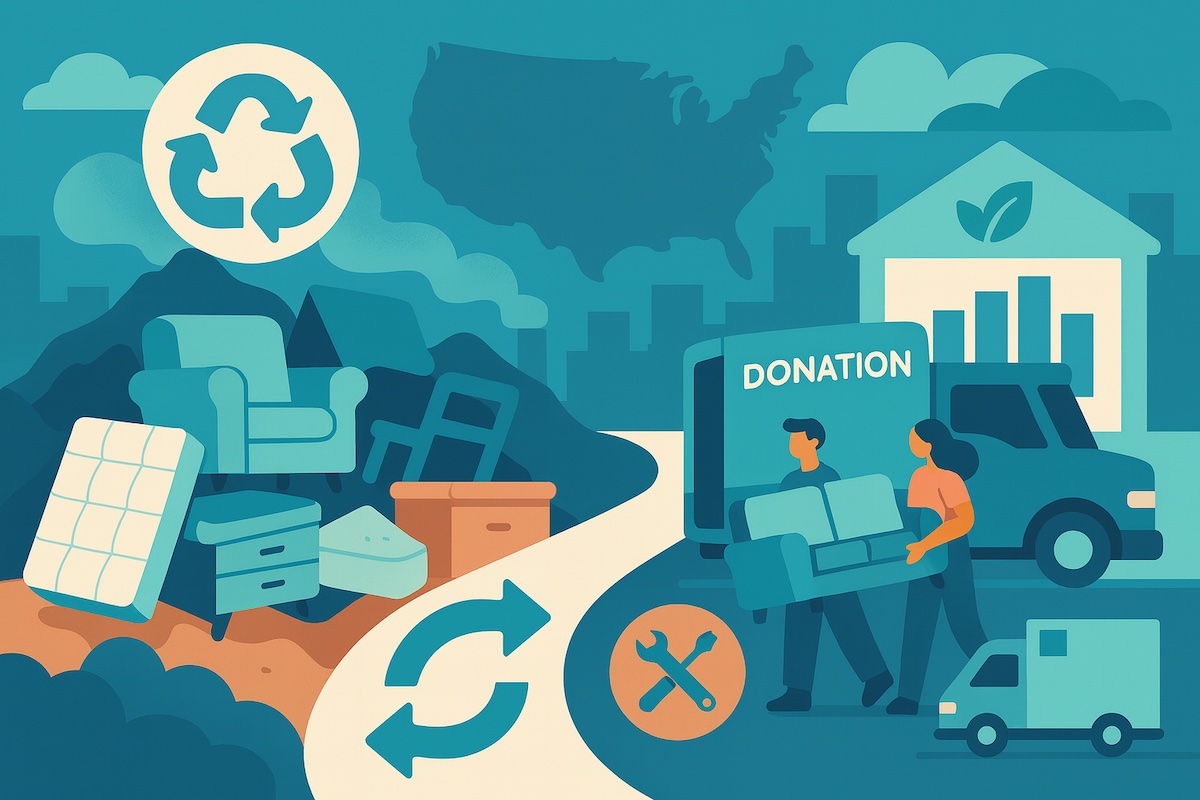Surprise! 7 Large Household Items You Didn’t Know You Could Donate

You wouldn’t believe what some charities will accept—so before sending that bulky piece to the curb, read on. Let’s help you declutter in style and sustainability!
Why bulky donations matter
Donating a “heavy‑lift” item isn’t just about freeing up space—it can support local jobs and nonprofit programs, keep reusable materials out of landfills, and even come with a donation receipt for tax purposes. When in doubt, match your item to a mission that can actually use it.
Before you schedule a pickup
Quick readiness checklist
- Condition: Clean, safe, and (if applicable) in working order.
- Access: Clear a path and note stairs/elevators/parking.
- Disassembly: Remove doors/shelves/legs if requested.
- Local policies: Accepted items vary by location—always call ahead.
7 surprising bulky items you can donate
1) Cabinets, countertops & old kitchen components
Remodeling? Those cabinets and counters can be reclaimed and resold by building‑reuse charities, funding community programs while reducing waste.
Prep checklist
- Remove fasteners and label sets to keep pieces together.
- Wipe down surfaces; avoid water damage and mold.
Try: building‑material reuse centers or architectural salvage nonprofits.
2) Architectural salvage: mantels, windows & columns
Vintage elements—doors, mantels, trim, even old windows—are prized for restoration and resale.
Prep checklist
- Handle glass with care; protect corners and edges.
- Bundle matching sets (e.g., pairs of doors).
3) Working appliances (even large ones, depending on policy)
Some locations accept large working appliances such as ranges, washers, or fridges. Policies differ—confirm brand/age requirements and whether cords/hoses must be intact.
Prep checklist
- Unplug, drain water lines, and clean thoroughly.
- Secure doors and loose parts for transport.
4) Vehicles (yes, really)
Cars, trucks, and sometimes boats or RVs can be donated—running or not—to support nonprofit programs via auction or recycling.
Prep checklist
- Locate the title and any lien release.
- Remove personal items; note vehicle condition.
5) Building materials & tools
Leftover lumber, doors, sinks, fixtures, hardware, and power tools can fuel DIY projects and workforce training when donated to reuse centers.
Prep checklist
- Sort by type/size; box loose hardware.
- Ensure tools are safe and operable.
6) Home medical equipment
Walkers, crutches, hospital beds, wheelchairs, and other DME (durable medical equipment) can be refurbished and placed with people who need them.
Prep checklist
- Clean and sanitize surfaces.
- Include chargers, manuals, and accessories when available.
7) Extra‑large furniture
Couches, dressers, armoires, bed frames, and dining sets are often accepted—especially if structurally sound and stain/odor‑free. Many orgs offer pickup.
Prep checklist
- Vacuum upholstery; tighten hardware.
- Disassemble for narrow hallways if requested.
Smart donation tips
Match item → mission
Medical equipment charities want DME; building‑reuse centers want fixtures and materials; furniture banks support households in transition. The better the fit, the bigger the impact.
Confirm acceptance & pickup
Acceptance policies vary by location and condition. Call or check the local site’s “Donate” page before you load up a truck.
Get a receipt
Most nonprofits provide a receipt. Take a few photos and keep a simple inventory for your records.
Quick FAQ
Can I donate items that need minor repairs?
Some organizations can repair or refurbish; others require items to be in good working order. Always ask first.
What if my item isn’t accepted?
Look for specialized recyclers, municipal bulky‑waste programs, or resale options. When possible, prioritize reuse over disposal.

